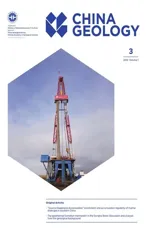Geological characteristics, metallogenic regularities and the exploration of graphite deposits in China
2018-01-13LiSunCuipingXuKeyanXiaoYushengZhuLingyaYan
Li Sun , Cui-ping Xu, Ke-yan Xiao , Yu-sheng Zhu , Ling-ya Yan
a Institute of Mineral Resources, China Academy of Geosciences, Beijing 100037 China
b MLR Key laboratory of Metallogeny and Mineral Assessment, Beijing 100037 China
c Institute of Geology, China Academy of Geosciences, Beijing 100037 China
d Shandong Branch of China National Geological Exploration Center of Building Materials Industry, Jinan 250100 China
ABSTRACT
The demand for graphite resources has been increasing due to its extensive use. Graphite deposits in China are mainly distributed in Heilongjiang, Innner Mogolia, Sichuan, Shanxi and Shandong, characterized by"one old & one new" and "many in east & few in west". There are mainly three genetic types, including regional metamorphic type, contact metamorphic type and hydrothermal type. Here we provide a summary of the metallogenic regularity and 15 metallogenic belts in China based on the study of the geology of national graphite deposits. In recent years, great progress has been made in the research of genesis, mineral exploration and evaluation on graphite deposits, which indicate great potential for graphite resource in China. The authors suggest that the research on geochronology, ore sources, the genesis of crystalline graphite and exploration for hydrothermal graphite in China should be heightened.
Keywords:
Graphite
Metallogenic regularity
Mineral potential
Research progress
1. Introduction
Graphite can be used in metallugic, chemistry, machinery,medical equipment, nuclear power, car and avaiation industry(Fang Y et al., 2009; Gao TM et al., 2015; Wu XH et al.,2016). It has been used in China since the Shang Dynasty(more than 1500 years ago). Graphite mining developed rapidly during the early 20th Century since the technology for making batteries and pencils with graphite was introduced to China.
The geological study of graphite deposits in China began in the 1920s (Mo RJ et al., 1989), when Nanping graphite deposits were investigated in 1917. Since the founding of the P.R.C, an extensive amount of geological surveys and institutions have conducted various explorations and studies,resulting in the discovery of deposits in areas such as Shijiqi,Sanchaya, Jinxixiashan and Sujiquan in Xinjiang. A batch of large to super large graphite deposits were discovered recently(e.g. Chaganhulutu, Huangyangshan, Xichuan, etc.)
Scholars and institutes around the world have carried out a lot of research on the genesis, metalogic regularities and the mineral potential of graphite deposits. For example, Mo RJ et al. (1989) systematically summarised the genetic types,distribution, metallurgic characteristics and exploration of graphite deposits. Yang PQ et al. (2017) studied the geochemical characteristics and geochronology of representive graphite deposits on Jiamusi massif. Ma ZX et al. (2018)studied the genesis and source of Nanjiangpinghe graphite.Wright AJ et al. (2012) studied the genesis of graphite veins in NW Scotland. Luque FJ et al. (2012) studied the key controlling factors of massive graphite deposits in volcanic setting and discussed the deposition mechanism of highly crystalline graphite(Luque FJ et al, 2009). Li C et al. (2015)studied the metallogenic regularites of graphite deposits in China. Yan LY et al. (2018), Xiao KY et al. (2016) studied the geological characteristics, delineated metalogic belts and assessed mineral potential of graphite deposits. Tang C et al.(2016), An JH et al. (2016), Ni ZP et al. (2016) assessed the mineral potential of graphite in Heilongjiang, Hunan and Shandong respectively. Cui N et al. (2017) documented a national initiative on the assessment of graphite resources in China.
Based on previous research results, this study conducts the analyses of the distribution of graphite resources and geological characteristics in China, summarises metallogenic regularities, delineates the metallogenic belts and assesses mineralisation potential in various provinces. Here we make a suggestion about research, exploration and the exploitation of graphite deposits in China.
2. Distribution and resource overview of graphite resource in China
Graphite deposits are widely distributed in China,characterized by most deposits being medium-large deposits and the resource being relatively concentrated in a few metallogenic areas. Heilongjiang, Nei Mongol (Inner Mongolia),Sichuan, Shanxi and Shandong account for nearly 90% of the total resources, of which Heilongjiang accounts for nearly 43% of the national resource (Fig.1).
Graphite can be divided into crystalline and aphanitic types. Crystalline graphite deposits are widespread, and dominated by large and medium deposits, where resources are relatively concentrated in certain areas. Approximately 150 crystalline graphite deposits were discovered with 300 Mt reserves by the end of 2016. (Fig. 2, Table 1).
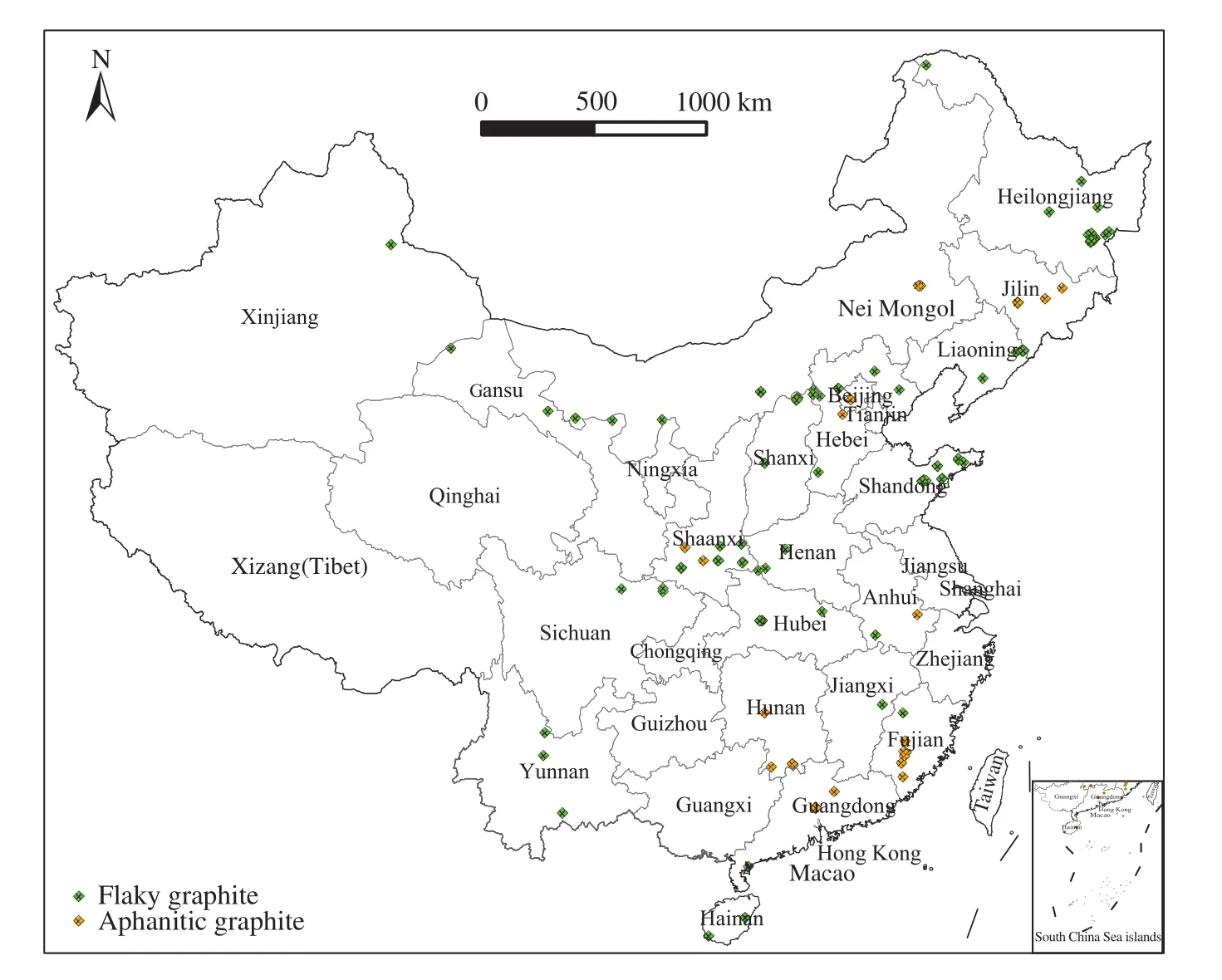
Fig. 1.The distribution of graphite deposit (occurences) in China.

Fig. 2.A pie chart showing the distribution of crystalline graphite resources in China, 2016 (modified from MLR, 2016).
About 30 aphanitic graphite deposits have been identified with a total resource of nearly 65 Mt, among which reserve base is 20 Mt and the resource is 43 Mt. The Aphanitic graphite resources focus in Inner Mogolia, Hunan, Jilin,Guangdong and Shanxi (Fig. 3, Table 2).

Fig. 3.Portions of apanitic graphite resources in individual provinces in China in 2016 (modified from MLR, 2016).
3. Graphite deposit genetic types (in China)
3.1. Genetic types
Clark TH (1921) had classified graphite deposits into stratiform, disseminate, vein- type, pegmatite type and deposits related to natural iron and meteorite. Simandl GJ et al. (2015)had classified graphite deposits into microcrystalline graphite, vein-type graphite and flake graphite deposits. These two classification systems are not clear enough to guide graphite exploration. Chinese geologists normally follow Mo RJ’s classification system which classified graphite deposits into regional metamorphic,contact metamorphic and hydrothermal types (Table 3).According to the degree of metamorphism, regional metamorphic-type graphite deposits can be further subdivided into high-grade (amphibolite- and granulite-facies) and lowgrade (greenschist-facies) metamorphic types.
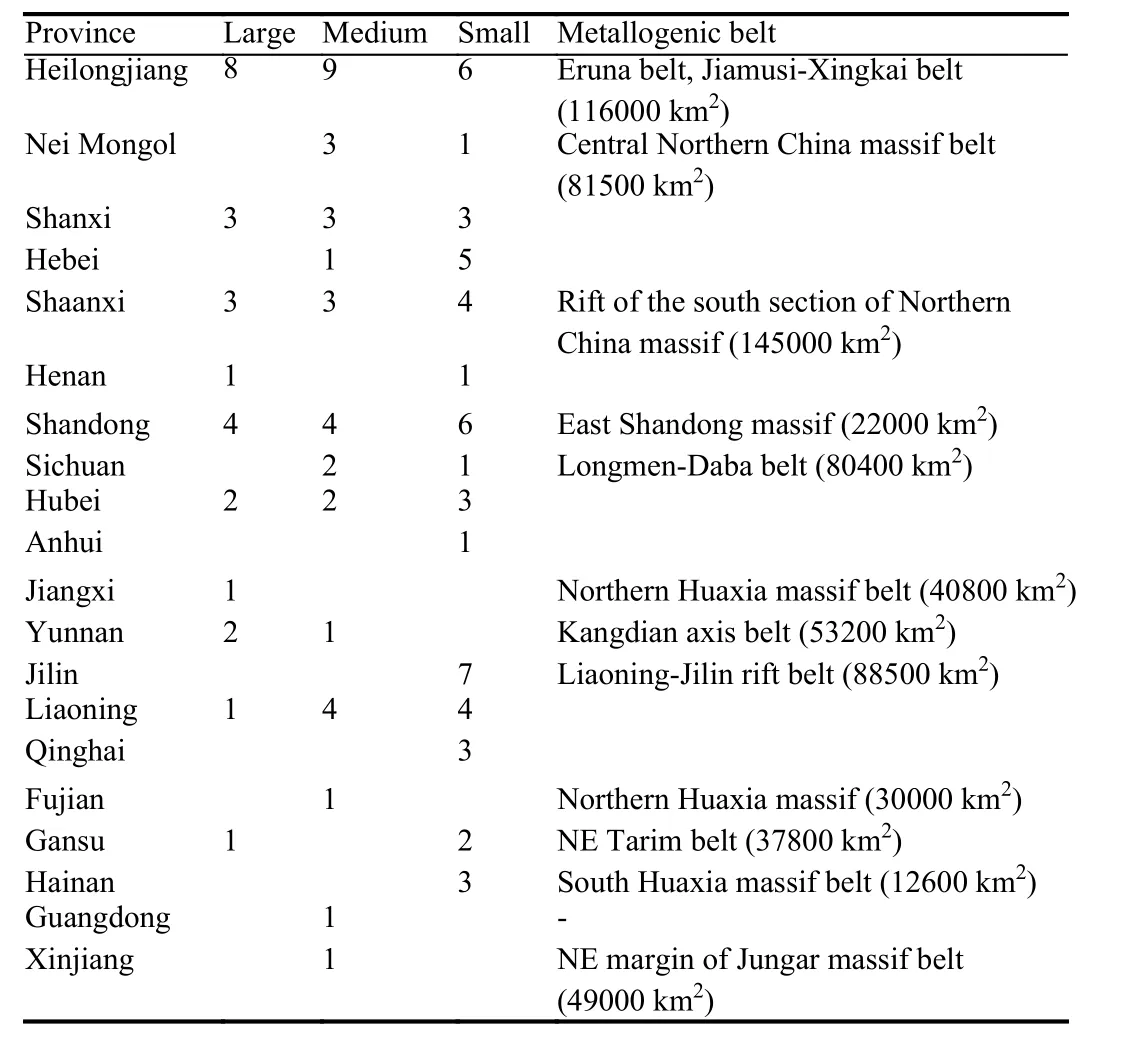
Table 1.Crystalline deposits distribution in provinces and metallogenic belts (modified from MLR, 2016).
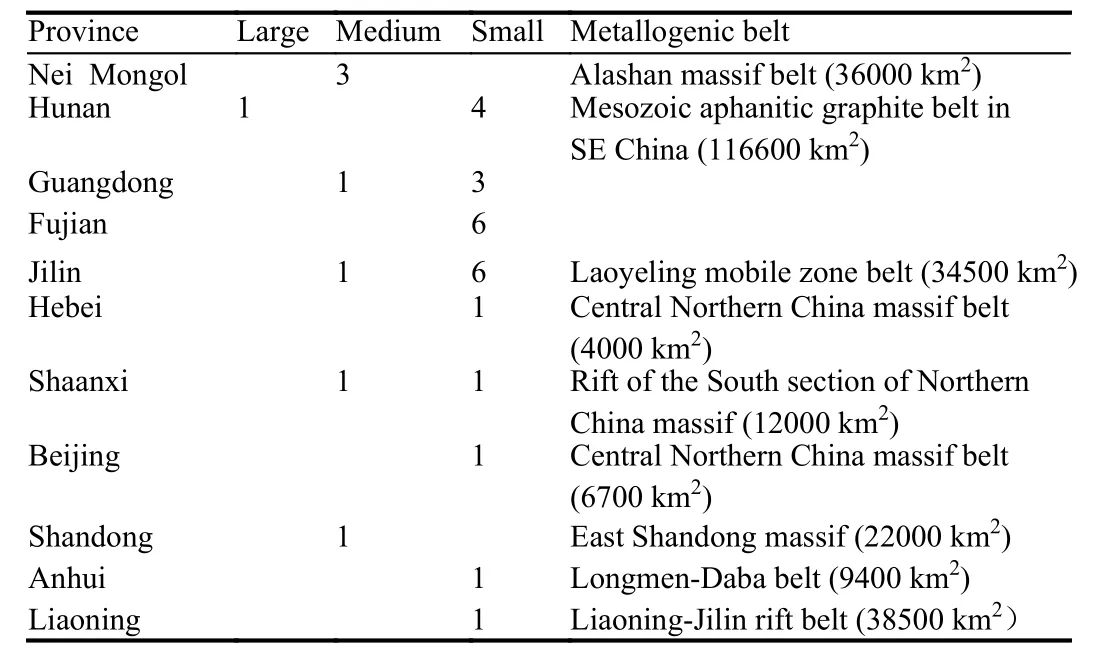
Table 2.Aphanitic graphite deposits in provinces and metallogenic belts (modified from MLR, 2016).
Based on the different ore-bearing wall rocks, magmatichydrothermal graphite deposits can be further subdivided into granite-type and granitic pegmatite-type. The former occurs as graphitized granites or felsic dykes, whilst the latter occurs as disseminated graphite ores.
Regional metamorphic deposits are the main type of graphite deposits in China, accounting for 82% of total graphite resources, while contact metamorphic type accounts for 17.9% and hydrothermal type for 0.1% (MLR, 2016).
3.2. Typical graphite deposits
3.2.1. Regional metamorphic type: Liumao graphite deposit
Liumao graphite deposit is a regional metamorphic deposit, representing the graphite deposit in Luobei-Jixi area of Heilongjiang. It is located in the Jixi-Boli metallgenic zone in the south section of Jiamusi-Xingkai block, where the Langjiagou anticline structure is developed and its strata is composed of graphite-bearing schist, gneiss and granulite of Paleoproterozoic Mashan group (Yuan L et al., 1993). Major rock types include sillimanite schist, mica schist, quartz schist, felsic schist, cordierite gneiss, calcic gneiss,calciosillicates, marble and granulite (Cao SG et al., 1993)and the protolith consistis of gritty-argillic-carbon rich marlstone and Mg-enriched carbonate (Li GH et al., 2008).Graphite ore bodies are hosted in schist, magmatised granite and marble, appear as stratiform-like, stratiform and lenses,and are locally damaged by late deformation events (Fig. 4,Table 4).The fixed carbon content ranges from 3.92% to 17.06% with an average of 9.76%.
The graphite ore is dominated by graphite bearing schists such as garnet schist, silicate schist, cordierite schist,potassium feldspar schist with a flaky crystalloblastic texture and schistose structure. The main ore mineral is crystalline flaky graphite (diameter: 0.3–1.0 mm). The graphite flakes of schist-type ores are generally smaller, whilst those of the biotite plagioclase gneiss-type and leptite-type ores are generally larger. This suggests that the graphite flake size may be positively correlated with the metamorphic grade.
Research results demonstrate that Liumao graphite deposits might have been carbon-rich terrigenous sediment,experiencing high temperature and high-pressure regional metamorphism and converting organic carbon into graphite during Paleoproterozoic.
3.2.2. Contact metamorphic type: Lutang graphite deposit
Lutang graphite deposit is a presentive deposit of contact metamorphic type, located to the southwest of Chenzhou city.The Upper-Middle Carboniferous Hutian Group, Lower Permian Qixia Formation, Dangchong Formation, Upper Leping Formation and Zhangxing sequence are exposed in the ore district. There are two sets of faults: a roughly EW-trending set of normal faults, and a NS- to NNE-trending reverse faults. All these faults are post-mineralization and have varying impacts on the orebodies. Indosinian Qitianling granite intruded as batholith with lateral zonation comprising inner transition zones and outer marginal zones. Ore bodies were hosted by coal seams in Leping formation and occur as multiple layers (Fig. 5, Table 5). The thickness of ore bodies varies from 0 to 10.81 m with an average of 1.62 m. The fine flaky graphite assemblage occurs with euhedral or subhedral crystals in massive ore. The diameter of flakes varies from 0.1μm to 1 μm with an average of 1.5 μm. The ore mineral is mainly composed of graphite with the fixed carbon content of 70%–86%, mixed with illite, kaolinite and quartz, and a small amount of pyrite, chacopyrite and marsite. The graphite Re-Os age of 155.6±3.6 Ma indicates Lutang graphite deposits related to the second-phase intrusion of Qitianling granite, and even suggests that the deposits experienced the thermal metamorphism within 900 m from western contact with Qitianling granite and results in converting coal into graphite(Li C et al., 2015).
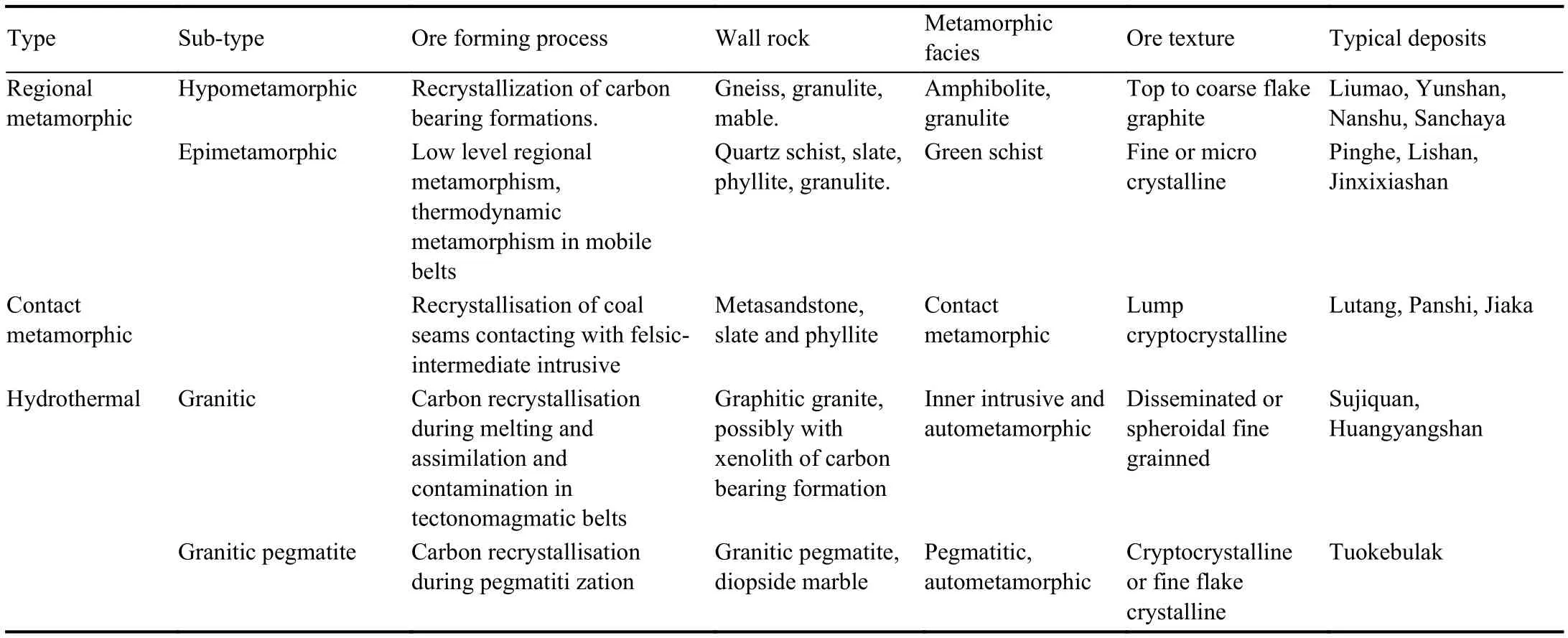
Table 3.Classification of graphite deposits (after Mo RJ et al., 1989).

Table 4.Geologic characteristics of Liumao graphite deposit.
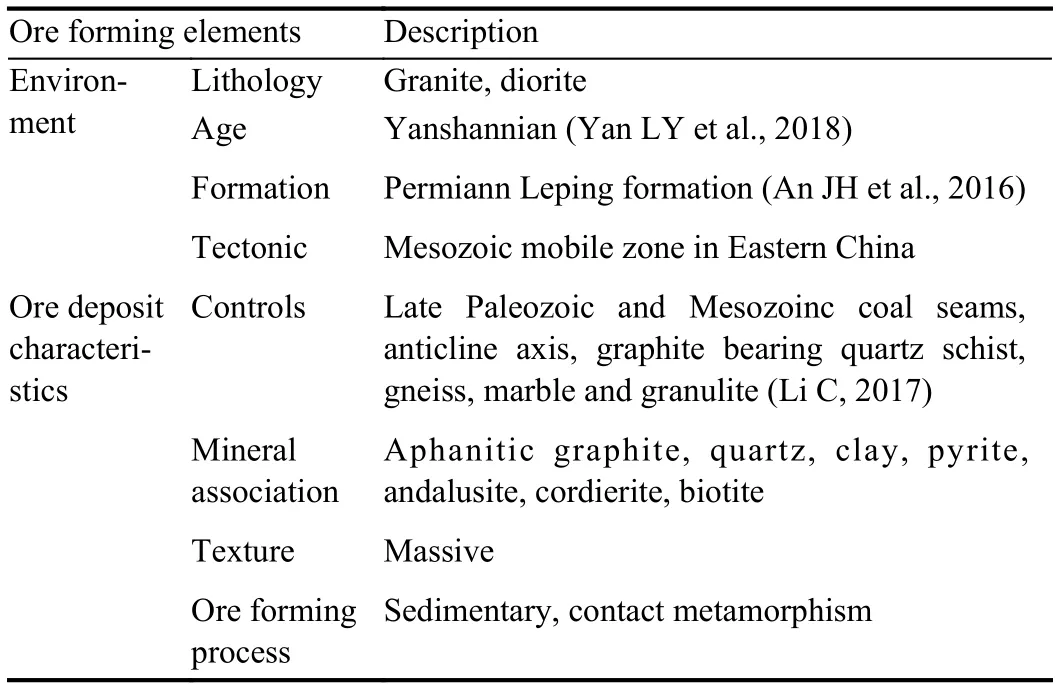
Table 5.Geological features of contact morphic graphite deposits.

Fig. 4.Ore-forming model of Liumao graphite deposit (after Wang et al., 2017).
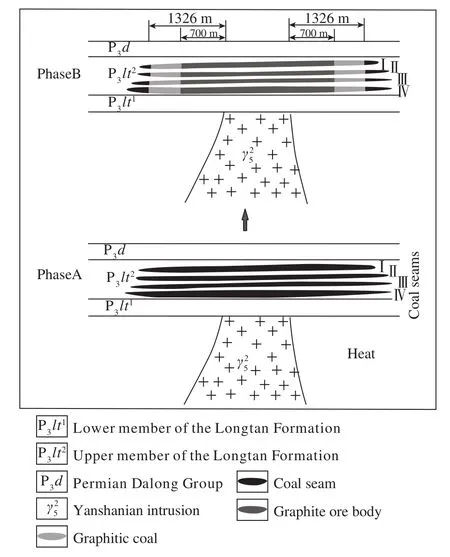
Fig. 5.Ore-forming model of Lutang graphite deposits (after An JH et al., 2016).
3.2.3. Hydrothermal type: Huangyangshan graphite deposit
Huangyangshan graphite deposit, located in Qitai county,Xinjiang autonomous region, is a presentive deposit of the hydrothermal type. It occurs on the collision zone between the Sibria plate and Kazakhstan-Junggar block. Huangyangshan alkalic granite intruded into tuffaceous siltstone, sandstone,phyllite and rheolite of Devonian to Carboniferous age following Kalamaili fault. Huangyangshan granite is dominated by biotite granite, amphibole granite, arfvedsonite bearing granite, biotite granite and graphite bearing granite(Ai J, et al.,2018; Bai JK et al., 2017).
Graphite ore bodies occur in medium to fine grained graphite bearing alkaline granite (Zircon U-Pb age of 303.6±4.0 Ma, Bai JK et al., 2018). The resources of two main ore bodies (No. I and No. II) total 72.64 Mt and fixed carbon content varies from 6.14% to 7.83%.
The ore is of an assimilation and contamination type with metasomatic relict and massive texture. Graphite flakes form spheroids with a diameter of >1 cm. The formation of this type of deposit is due to magmatic assimilation and contamination caused by the intrusion of alkaline granitic magma into carbonaceous strata following Kalamaili deep fault. (Fig. 6, Table 6).
4. Metallogenic belt divisions and metallogenic regularities of graphite deposits (in China)
4.1. Metallogenic belt divisions
Based on previous studies (Zhu YS et al., 2000; Xu ZG et al., 2008; Wang JC et al., 2013, Yan LY et al., 2018), the author carried out the analysis of geological characteristics of graphite deposits and divided 15 metallogenic belts according to the following indicators (Fig. 7, Table 7): Mesoarchean,Neoarchean, Paleoproterozoic and Mesoproterozoic strata,metamorphic facies, tectonic setting and discovered graphite deposits or occurrences.

Fig. 6.Ore-forming model of Huangyangshan hydrothermal graphite deposit (after Bai JK et al., 2017; Ai J et al.,2018).

Fig. 7.Graphite metallogenic belts of China. 1–Erguna belt; 2–Jiamusi-Xingkai belt; 3–Laoyeling mobile zone belt; 4–Liaoji rift belt; 5–East Shandong massif belt; 6–Central northern China massif belt; 7–Alashan massif belt; 8–NE Tarim belt; 9–NE margin of Jungar massif; 10–rift of the South section of Northern China massif; 11–Longmen-Daba belt; 12–Kantdian axis belt; 13–Northern Huaxia massif belt; 14–Mesozoic aphanitic graphite belt in SE China; 15–South Huaxia massif belt.

Table 6.Geological characteristics of hydrothermal graphite deposit.

Table 7.Characteristics of the graphite metallogenic belts.
4.2. Metallogenic regularities
The distribution of graphite deposits is controlled by specific geological settings. Platform uplift and folding uplift are the most important geological settings for regional metamorphic graphite deposits while tectono magmatic zones are the main setting for contact metamorphic graphite.
Regional metamorphic deposits occur in uplifts in the platforms of eastern China (e.g. Jiaoliao faults, Inner Mogolia axis, fault uplifts in west Henan and Shanxi) and folding belts in Jilin-Heilongjing, Qinling, Qilian, South China and Sanjiang (e.g. Huangling anticline, Longmen-Daba folding belt and Kangdian axis). Graphite deposits formed in the Neoarchean and Paleoproterozoic continental nucleus or formed in the mobile belts of the Neoproterozoic continent.Strongly deformed Proterozoic strata spread extensively in ancient plates host most of the regional metamorphic graphite deposits. Ore mineral is dominated by flaky graphite. The main mineralization epochs are Neoarchean and Paleoproterozoic.
Contact metamorphic deposits occur in the contact between intrusive and coal seams. This type of deposit distributes in the circum pacific tectonic domain in east China. Graphite deposits in South China are hosted by late Permian formations and by Jurassic and Carboniferous formations in northern China. Ore mineral is dominated by aphanitic graphite.
Hydrothermal graphite deposits are formed by granitic magma intruding carbon-bearing strata. Carbon hosted in strata recrystallized to graphite under high temperature and high pressure reduced environments (Feng YL and Li L,2007). Carbon bearing strata provided the material source while magma provided heat and fluids.
A summary of the geological characteristics of individual types of graphite deposits are illustrated in Table 8 and Table 9.
1.5统计学方法 对结果采用统计学软件SPSS18.0进行分析,计数资料采用[n(%)]表示,组间比较采用X2检验,计量资料采用(±s)表示,并用t检验,组间差异具有统计学意义(P<0.05)。

Table 9.Summary of national graphite deposits.
5. Future trends, existing problems and future prospects
5.1. Mineral potential
According to the new round of potential assessments of graphite resources, the resources estimated to a depth of 500 m in China is more than 1.7×109t. The resources for the most significant graphite rich provinces are as following:
(i) In Heilongjiang, 900 Mt of graphite resource is hosted in regional metamorphic-type deposits and 17 Mt in contact metamorphic-type deposits.
(ii) In Inner Mogolia, 450 Mt of graphite resource is in regional metamorphic-type deposits and 20Mt in contact metamorphic-type deposits.
(iii) In Shandong, 120 Mt of graphite resource is in regional metamorphic-type deposits.
(iv) In Jilin, 8 Mt of graphite resource is in regional metamorphic-type deposits and 13 Mt in contact metamorphic-type deposit.
(v) In Liaoning, 20 Mt of graphite resource is in regional metamorphic-type deposits.
For other graphite rich provinces, the Delphi method was applied to estimate resources to the depth of 500 m (Fig. 8).

Fig. 8.Potential graphite resources in China.
The existing graphite resources account for 17% of potential graphite resources, indicating graphite mineralization potential is great in China.
5.2. The direction for graphite deposit research
We suggest that the following aspects should be hightenedin the study of graphite deposit geology and resource evaluation.
(i) Geochronology. For regional metamorphic graphite deposits, Zircon U-Pb dating was tried in a few graphite deposits (Yang PQ et al., 2017) and most deposits were dated by indirect methods. Due to multiphase tectonic movements and hydrothermal alteration, it is difficult to date regional metamorphic deposits. Re-Os dating provided a new method to date graphite deposits but the results are debatable due to multiple phases of metamorphism. New dating methods should be tried and the results should be interpreted with geologic evidence.
(ii) Graphite source. Whether sources of graphite deposits being inorganic or organic material has been under debate for decades. Most researchers tend to believe the organic source of graphite deposits (Li KY et al., 2018), but inorganic sources are not excluded. For exmaple, Charles AS (1971)proposed that vein type graphite deposits were sourced from a chemical reaction between carbonate and hydrogen. Zhang SH et al. (1995) described the carbon isotopic characters of SW Henan graphite deposits and believed them to be sourced from inorganic materials. Besides carbon isotope, new methods such as the Re-Os method could be used to identify the source of graphite.
(iii) Genesis of large flake graphite. Large flake graphite are the main raw material for manufacturing graphene and batteries and the price of which is higher than other types of graphite. Few studies on the metallogenic mechanism of large flake graphite have been conducted to date.
(iv) The sudy of ore genesis and mineral potential assessment should be improved for hydrothermal graphite deposits since Huangyangshan is an emerging giant graphite deposit in the Kalamaili belt. As a new deposit, little research on ore genesis has been carried out and it is still unclear how the graphite spheroid formed. As a new metallogenic belt, the mineralization potential for hydrothermal graphite deposit should be assessed as well.
6. Conclusions
(i) Graphite resources in China mainly concentrate in Heilongjiang, Inner Mogolia, Sichuan, Shanxi and Shandong.There are more resources in Eastern China than in Western China.
(ii) The dominant ore deposit types are regional metamorphic, contact metamorphic and hydrothermal types.The main mineralization epochs are Neoarchean,Mesoproterozoic, late Paleozoic and Mesozoic. Graphite potential evaluation demonstrates the potential of graphite in China is still great.
(iii) The study of geochronology, ore material sources,and ore forming mechanisms for large flake graphite and exploration on hydrothermal graphite should be hightened.
Acknowledgment
This research is jointly sponsored by the National Key R&D Program of China (2016YFC0600504) and China National Mineral Assessment Initiative (DD20160100). The authors are grateful to anonymous reviewers and Dr. Yan Yang for their valuable suggestions and comments on the manuscript.
猜你喜欢
杂志排行
China Geology的其它文章
- “Source-Diagenesis-Accumulation” enrichment and accumulation regularity of marine shale gas in southern China
- The geothermal formation mechanism in the Gonghe Basin: Discussion and analysis from the geological background
- The evolution of the Huangling uplift and its control on the accumulation and preservation of shale gas
- Ordovician sequence stratigraphy and correlation in the Middle-Upper Yangtze region,South China
- Multi-factor sensitivity analysis on the stability of submarine hydrate-bearing slope
- Petrogenesis of the microcrystalline-dioritic enclaves from Jiuling granitoids in the eastern segment of Jiangnan Orogen and constraints on magma source materials
